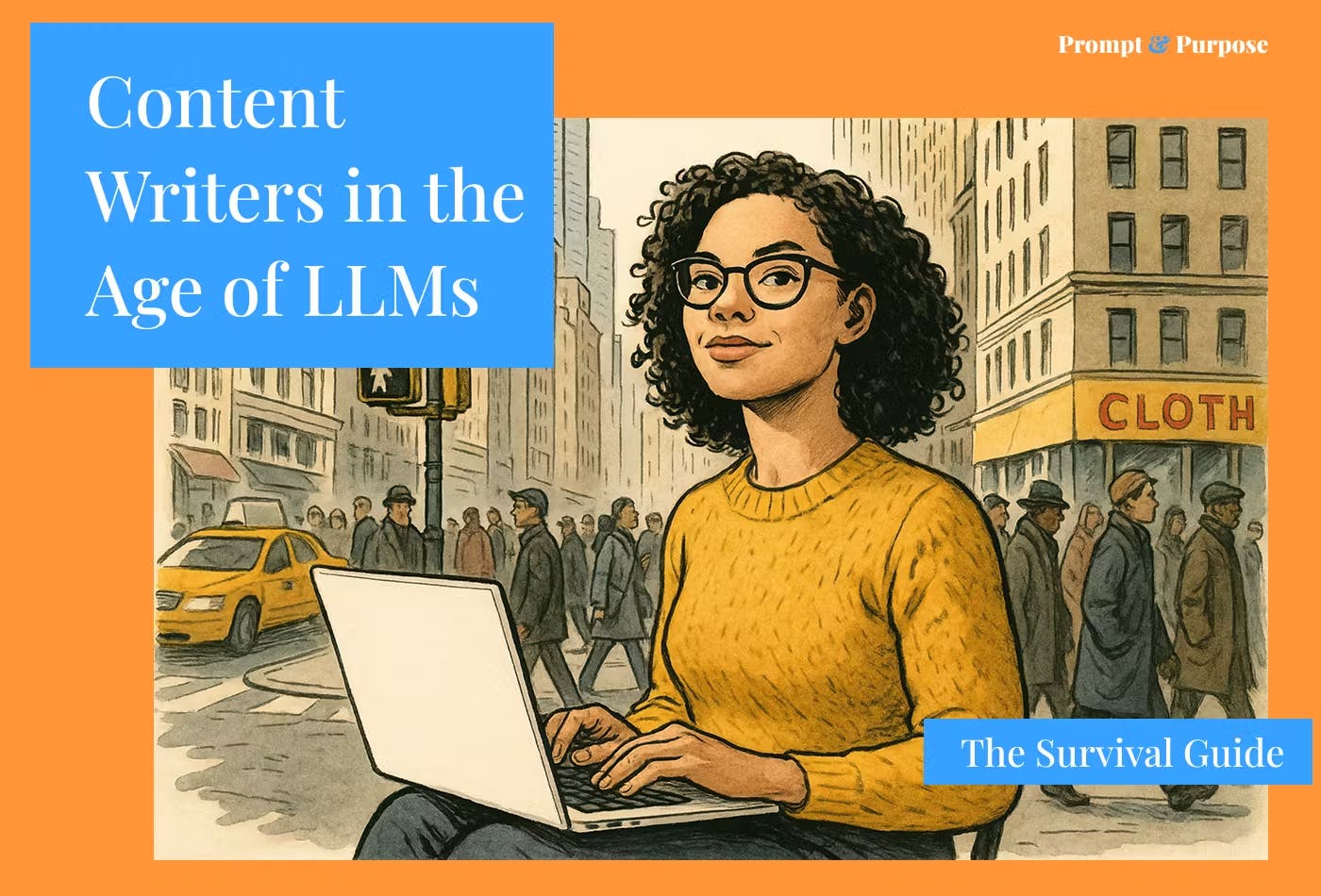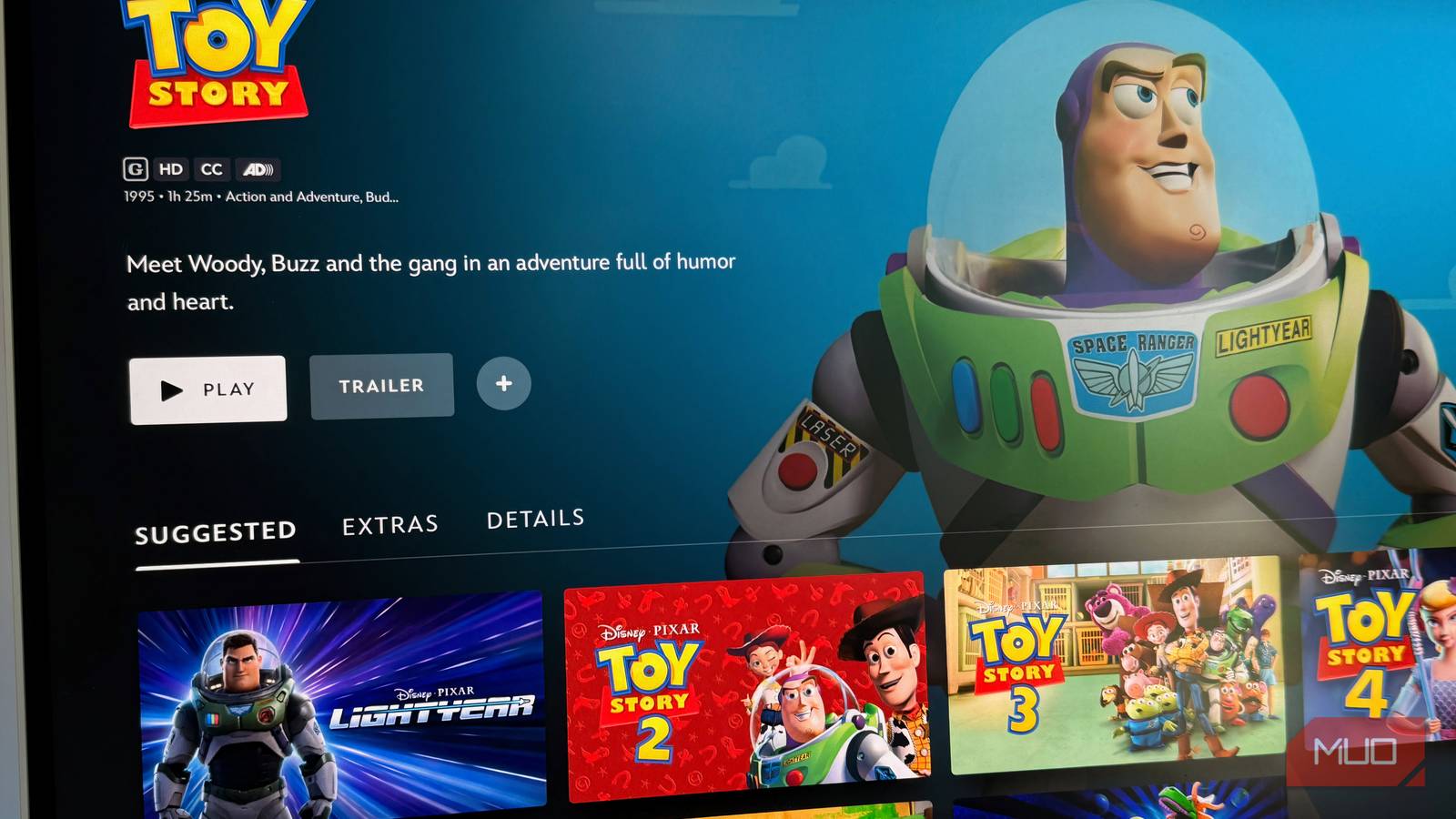Dear content writer: It’s not you. It’s the AI that thinks she is a search engine now.
If you’re a content writer trying to keep your brand at the top of Google with strong SEO and solid content, you’re not alone. You’ve done everything right: followed the rules, crafted valuable pages, and watched your site climb in search rankings. But now? Things are shifting.
People are turning to AI tools like Gemini, ChatGPT, and Perplexity for answers (apparently, scrolling through 10 tabs is just too 2022). That means fewer visitors are clicking on your links. It can feel frustrating after all your hard work.
And when your boss asks why traffic is down? That’s a tough conversation. The conventional metrics — impressions, clicks, visits, and conversions — no longer paint the full picture.
I get it. Some days, I imagine quitting it all and moving to a quiet village to bake bread and tend cows that don’t ask for performance reports. Sounds peaceful, doesn’t it?
But here’s the thing: we’re not losing control. The game is changing, but that means new opportunities too. We’re not just trying to rank on Google anymore. Now, we need to help AI tools see, understand, and recommend our content.
Think of AI search like a brand-new city. Most of the best spots are still wide open. If you’re willing to learn and adapt, you can be among the first to claim them.
To do that, we need new ways to measure success. The good news? With the right tools and data, you can prove the value of your work and show your boss you’ve got this.
Let’s walk through this together. I’ll explain everything step-by-step, no fluff, and with a real example in a crowded and fast-paced market, no-code automation tools.
TL;DR
After a short “everything-is-changing” panic, I dove into GEO (Generative Engine Optimization), the next evolution of SEO. This article is your beginner-friendly, practical guide.
What you’ll learn:
- How to track your brand and competitors in AI search
- How to optimize your content to boost AI visibility
- How to earn citations that AI tools notice
Takeaways
- AI visibility is the new SEO. Now call it GEO It’s not just about Google rankings. Your content needs to be seen, trusted, and cited by tools like ChatGPT and Gemini.
- Long-tail questions win. Focus on detailed, persona-driven questions. That’s what AI is built to answer, and where most brands still aren’t.
- Show real proof. Back up your claims with data, quotes, and results. AI is more likely to cite content it can trust.
- Help AI find your content. Use clear headings and schema markup so AI can easily scan and surface your insights.
- Get mentioned in communities. AI listens to the internet’s chatter—Reddit, Quora, LinkedIn, Wikipedia. Your brand should show up in the right conversations.
- SEO still matters. AI Overviews pull from top-ranking pages. Strong SEO increases your chances of being cited. Don’t ditch the basics.
What is AI Visibility?
Have you ever asked ChatGPT, Gemini, or Perplexity a question and noticed how fast, clear, and helpful the answer was?
AI search is catching on fast. According to Semrush, AI search traffic is expected to surpass traditional search traffic by 2028. ( Does it give us just enough time to panic? probably the answer is not…) Even if you’re still using Google like always, you’ve probably seen AI-generated answers pop up first, often from Gemini. We will see AI mode and AI overview in all browsers very soon.
AI visibility means this: how often AI tools mention, cite, or recommend your brand when users ask questions. For example, if someone asks ChatGPT, “What is the best no-code tool for automating a marketing campaign?” and your brand shows up in the answer, that’s AI visibility.
The more often AI mentions you, the more people discover you.
What is LLM Optimization?
LLM optimization is the work you do to help large language models (LLMs) understand your brand and recommend it in their answers. You’re helping AI see that your content is helpful, trustworthy, and worth sharing.
The best part? Much of what you already do for SEO remains applicable. But there are also new tactics that can push your content even further.
Let’s go step by step. No jargon. No fluff. No whiteboard diagrams drawn in existential despair.
Your 3-Step Plan to Get Cited by AI
Track Your Brand and Competitors in AI Search.
Traditional SEO starts with ranking checks. LLM visibility starts with conversation.
Step 1: Ask AI for your brand and competitors. Open AI tools like ChatGPT, Perplexity, Claude, and Gemini. Ask for:
What are the best no-code tools for automating tasks?
Compare Make vs N8N
Compare Make vs Zapier
Tell me about Make
(Adapt to your brand)
Take notes. What does the AI say about you? What tone does it use? What facts? These answers show how you’re being presented. Look for gaps. Where are your competitors visible that you are not? This is where you need to build presence through mentions. Wikipedia, news articles, review sites, or industry blogs.
Step 2: Use Pro Tools to track visibility over time. (Or just rely on your gut and a crystal ball, but I wouldn’t recommend it.)
I recommend you – Semrush AI, Profound, or Xfunnel
These tools help you monitor 3 relevant and actionable metrics:
Market Share: How often your brand is mentioned compared to others
Sentiment: Are mentions positive, neutral, or negative?
Engagement: Are people asking about your brand? Comparing it? Seeking reviews?
Step 3: Explain what’s going on to your boss. You can. Armed with this data, you can show that while traffic patterns may be shifting, your brand is still showing up where it matters.
Here’s the upside, according to Semrush: the average visitor from an AI tool is worth 4.4 times more than one from traditional search. They arrive at your website like a tourist who has already downloaded the map. They know where they’re headed, what they’re looking for, and they’re not just wandering around hoping to stumble on a café with Wi-Fi.
Make Content AI Wants to Cite In SEO
In tradicional SEO, you focus on keywords. You picked five or six and hoped to rank. But competition was fierce, and ranking often felt like a constant fight.
AI search works differently. Users aren’t just typing keywords. They’re asking detailed questions in natural language. For example:
What’s the best no-code tool for automating email marketing for a small business?
Which no-code platform is easiest for beginners who need to build a sales funnel?
AI tools answer with snippets — short, helpful pieces of info — from sources they trust.
Your job? Create those snippets.
Here’s how:
- Focus on ultra-specific questions. Break them down three ways:
Customer personas
- Best no-code tool for a solo founder with no marketing budget
- Best for startups that need to automate sales follow-ups
- Ideal for agencies managing multiple clients
Use cases
- Best for automating webinar follow-up emails
- The easiest tool for social media scheduling for small businesses
- Best for automating e-commerce sales funnels
Customer intent (research, compare, purchase)
- What are the most affordable no-code tools?
- Which tool is more flexible: Make, Zapier, or Gumloop?
- What’s the best no-code option for startups ready to buy?
Want to level up? Combine all three elements. That’s where the magic happens.
Start with long-tail questions
Examples
- What is the most affordable no-code tool for solo entrepreneurs who need to automate webinar follow-ups?
- Which no-code tool is easiest for non-tech small business owners ready to automate social posts?
- What’s the best tool for marketing teams to compare onboarding automation solutions?
Long-tail questions are a goldmine because most brands haven’t started digging there yet. Why fight for attention in a crowded room when you could have a quiet one-on-one with your exact customer?
Once you’ve built the bottom funnel, move toward broader topics.
Extra Tip: Use prompts like this to identify real questions:
“You are a content writer creating LLM-optimized content for a no-code marketing automation tool. Generate natural-sounding questions that mix persona, use case, and intent. Use personas like solo entrepreneurs, startups, and digital agencies. Use cases like follow-ups, onboarding, and social posts. Intents like comparing tools, making a purchase, or looking for budget options.” Extra Extra Tip: Use Semrush AI “Question tab” to surface real questions your audience is asking.
- Add Proof to Build Trust AI doesn’t just want opinions. It wants credible answers. Add:
Product usage stats
Client reviews
Expert quotes
Study results
Examples
80% of users saw a 20% boost in webinar attendance after using our reminders
Our sales funnel automation improved lead conversion by 15% — John, founder of ABC Startup
In a 2024 survey, Make users gave it a 4.7 for ease of use, vs. 4.2 for other tools
- Highlight What Sets You Apart. LLMs don’t just list brands. They recommend the best match for a specific user need. So, make sure they can see what makes your product special.
Maybe it’s the price. Maybe it’s flexibility. Maybe it’s your community.
If someone asks: “Which no-code tool is easy to learn quickly for non non-technical person?” AI should be able to say: yours. With your amazing library of resources, the academy, and the community.
- Make Your Content Accessible for AI. AI tools, like readers, need structure to find what they’re looking for. Use clear H1, H2, H3, and H4 headings to organize your content like a good table of contents.
And go one step further: add schema markup. Think of it as labeling the shelves in a store. It tells AI, “Hey, this is a product,” or “Here’s a step-by-step guide.”
Use the right schema for the content:
FAQ for questions and answers
How To for tutorials
Product for tools and features
Article for blog posts
Schema doesn’t just help AI understand your content; it makes it easier for it to recommend you.
Need a hand with JSON schemas? https://domsignal.com/json-schema-generator
Rank in Google’s Top 10. You’re more likely to get cited in Google’s AI Overviews if your content already ranks in the top 10 search results. So yes, SEO still matters. You should aim to rank your content and also get it featured on the highest-ranking pages in your category. Which brings us to the final step for boosting AI visibility – How to earn citations on other pages?
Get Mentioned Where AI Is Listening
Get cited by trusted sites. AI tools often pull data from Wikipedia, news articles, review sites, and top-ranked blogs. If you’re mentioned there, you’re more likely to get picked up.
Try this:
Pick a keyword like “no-code tool for automation.”
Scrape the top best-ranked new articles weekly.
Scrape the contact details of journalists.
Pitch them with helpful data, like: 80% of users save 5+ hours per week with x automation. Offer something valuable. Make their story better.
Even if you’re not in Google’s top 10, you still have a shot. ChatGPT often pulls from sources that don’t rank high.
Get cited by the community platform. AI also pays attention to real conversations from users. Especially on Reddit, Quora, LinkedIn, and Wikipedia. If your audience is already talking on Reddit or LinkedIn, why aren’t you there too?
Instead of dropping your brand into threads, try this:
Start a challenge. For example:
“I’m trying to automate all my small business marketing using only no-code tools for 30 days. Want to follow along?”
Post it in r/Entrepreneur, r/NoCode, or a niche LinkedIn group. Share what worked and what didn’t. As you go, your brand will come up naturally. People get value. AI sees the trust.
Final thought and dedication: This shift to AI search isn’t something to fear. It’s an open door. Few are walking through it yet. If you focus on helpful content, specific questions, and trusted mentions, you can stand out. You can lead.











